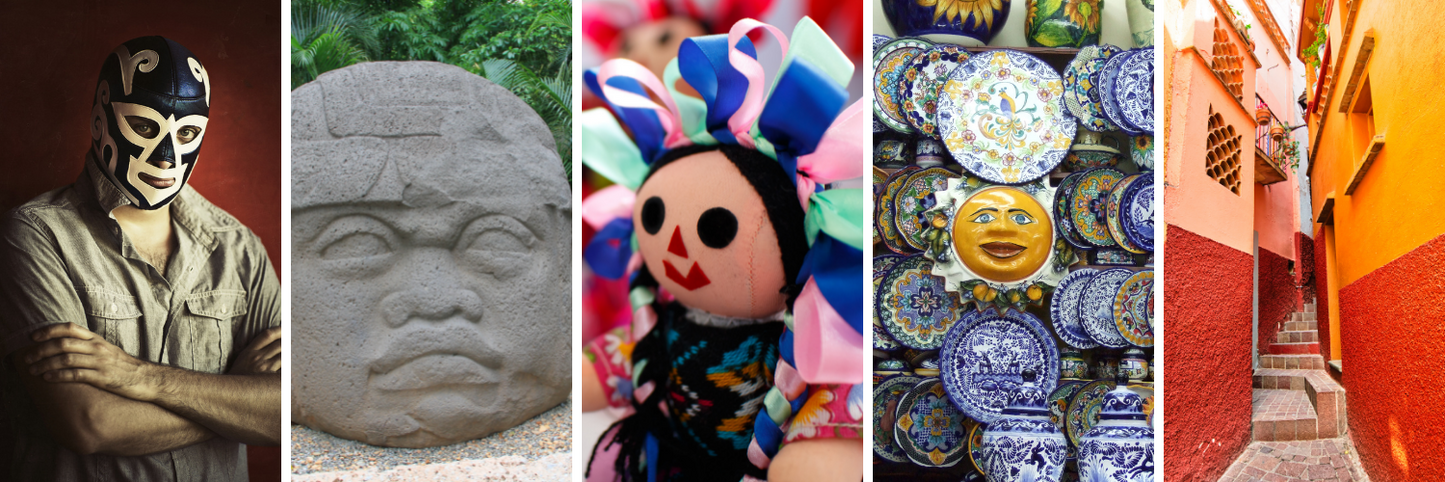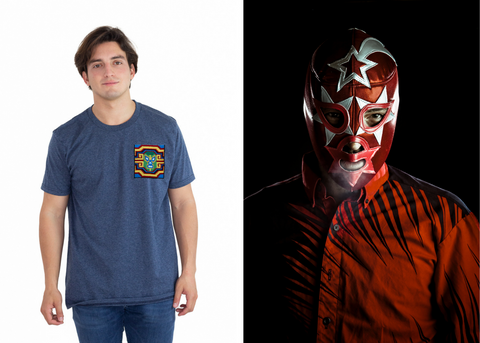
Mexico is a wondrous place with amazing smells, foods, and a culture that will leave you wanting more and more every time. However, Mexico is often portrayed as a dangerous place infested by drugs and crime. While these do exist, it is important to recognize the beauty of our country that has shared its wonders dating back to pre-hispanic times. The richness of its soil has given wonders to the gastronomy world and its people carry on tradition and lessons passed down through centuries via artifacts, songs, dance, and many other symbols. Below are just a few of the beautiful symbols that carry meaning and help keep the culture alive. These come from various states and you may find them in some of the jewelry or clothing items, such as the embroidered shirts. What are you waiting for? Help carry on these stories and take a little piece of our culture with you.
Olmecas
The Olmecs were the first civilization in Mexico appearing around 1600 BCE. Established over 3,000 years ago, the Olmecs were one of the first Mesoamerican complex societies that would go on to influence later civilizations like the Mayan. What is left of the Olmecs are their large structures in the shape of heads carved from volcanic rock called basalt. To date, 17 heads have been found in San Lorenzo and La Venta, located in Veracruz and Tabasco in southern Mexico. The most agreed-upon meaning of the heads are Olmec rulers.
Muñeca Lulu
Made by hand and decorated with ribbons in their head, Muñeca Lulu is a Mexican rag doll with a humble background. Their origins can be traced back to Mexico City and is often attributed to the Mazahua-Otomí Indigenous people. The dolls have a strong tie to Amealco in Queretaro, Mexico, where about 3,000 people are dedicated to making these dolls as a form of income.
Callejon del Beso
Situated in San Miguel de Allende, Guanajuato el Callejon del Beso (Alley of the Kiss) is known as a superstitious space where lovers must seal their love with a kiss on the third step of the alley. The superstition comes from the legend of star-crossed lovers who lived next to each other but were not able to fulfill their love due to the women’s father. It is said that when lovers kiss, their love will last a lifetime delivered in the spirit of Carlos, the man who loved Ana.
El Luchador
While many of us might be familiar with Nacho Libre, luchadores are more than tight-spanx-pants-wearing men. They are a part of the great Mexican entertainment industry known as lucha libre fighters, literally translated into free-style wrestling which was eventually adopted in the United States. This form of wrestling was started in 1863 from Greco-Roman wrestling and it is wildly popular because of the style of fighting and the use of colorful masks and bright uniforms. Oftentimes, the biggest loss for a fighter includes removing their mask and revealing their identity, making the stakes during a fight even higher.
Talavera
Talavera is Mexican pottery with Spanish influence. It is a special tin-glaze pottery art with a white glaze and 3D-like effect. Talavera products are only made in a few communities within Tlaxcala and Puebla because of the natural clay found there. Today, only a few designated areas and workshops are certified to call their work Talavera so make sure you know your purchase is certified!




